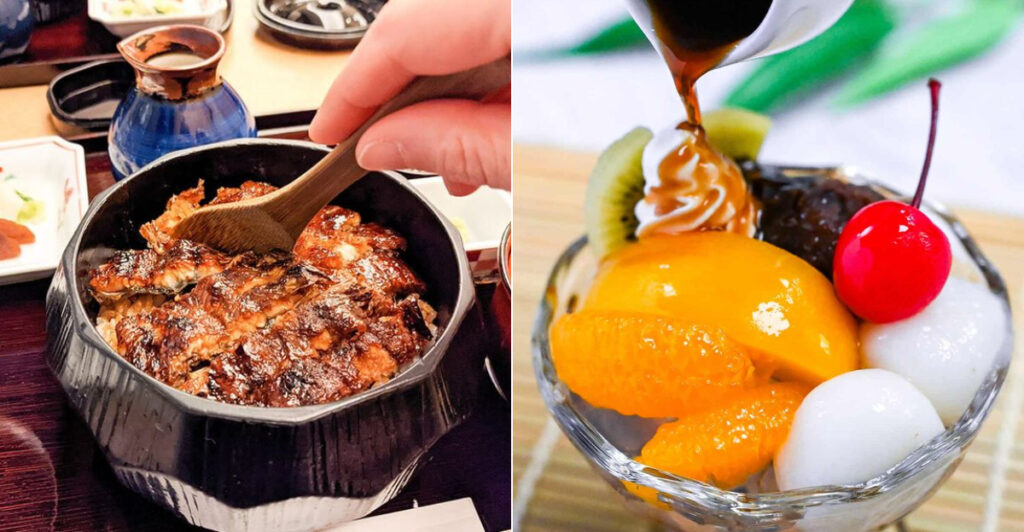Most Americans think Japanese food begins and ends with sushi rolls, but that barely scratches the surface. Japan offers an incredible variety of comfort foods, street snacks, and regional specialties that create lasting memories for travelers. From crispy octopus balls in Osaka to steaming bowls of regional ramen, these authentic flavors tell the real story of Japanese cuisine. Once you taste these dishes in their homeland, nothing back home quite compares.
1. Takoyaki (Osaka)
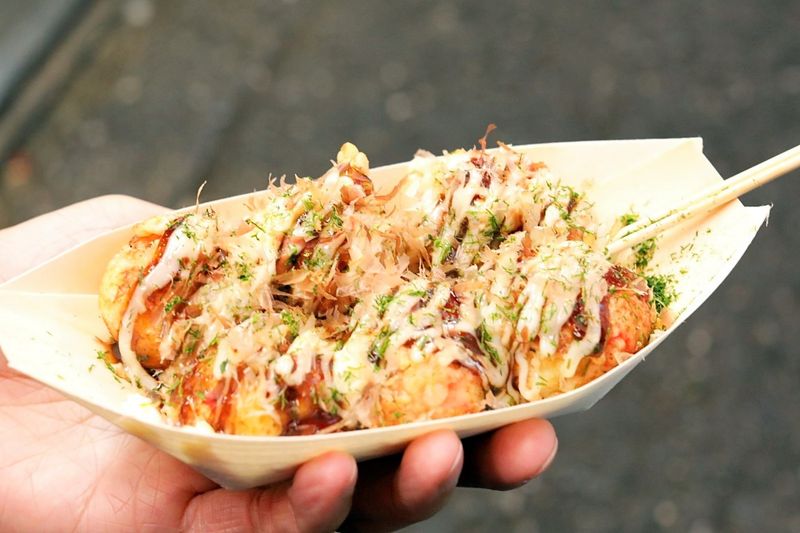
Picture golden spheres sizzling on a special gridded pan, each one hiding tender chunks of octopus inside. Street vendors flip these balls with lightning speed using metal picks, creating perfectly round treats.
The magic happens with the toppings: dancing bonito flakes that curl from the heat, creamy mayo drizzled in artistic patterns, and that sweet-savory takoyaki sauce. Each bite delivers a crispy exterior giving way to a molten, creamy center.
Osaka locals consider these their city’s signature dish, and watching them being made is half the fun. The theatrical preparation and communal eating experience make takoyaki unforgettable.
2. Okonomiyaki (Hiroshima/Osaka)

Imagine a savory pancake that’s more like a layered masterpiece than simple batter. Hiroshima-style builds layers: cabbage, noodles, pork, and egg, each component distinct yet harmonious.
The cook spreads everything on a massive griddle, flipping with spatulas the size of small shovels. Sweet-savory sauce gets painted on top, followed by mayo squiggles and a sprinkle of seaweed flakes.
Osaka’s version mixes everything together, creating a different but equally satisfying experience. Both cities claim theirs is superior, sparking friendly debates among locals. Either way, you’re getting comfort food that fills your soul and stomach completely.
3. Ramen (Regional Varieties)
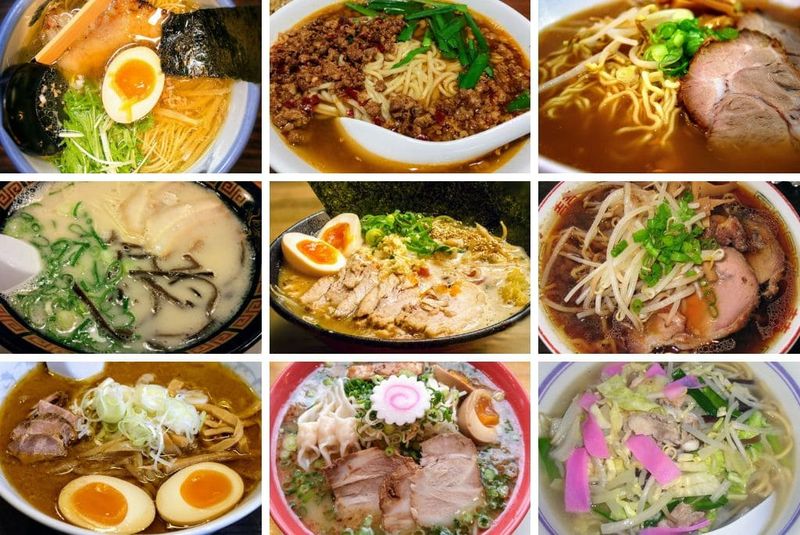
Every Japanese city puts its own spin on this beloved noodle soup, creating regional identities through broth and toppings. Fukuoka’s tonkotsu features rich, creamy pork bone broth that takes hours to achieve its milky appearance.
Sapporo counters with hearty miso ramen, perfect for cold winters, while Tokyo offers lighter shoyu-based broths. Each bowl tells a story of local ingredients and climate preferences.
The noodles themselves vary in thickness and texture, designed to complement specific broth styles. Slurping isn’t just acceptable—it’s encouraged to cool the noodles and enhance flavors. Regional ramen loyalty runs deep among Japanese locals.
4. Yakitori (Tokyo’s Omoide Yokocho)
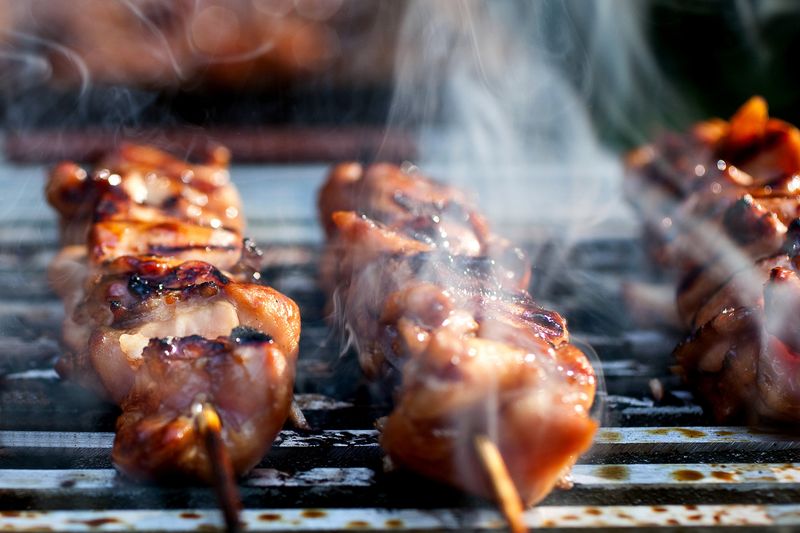
Narrow alleyways fill with smoke and sizzling sounds as tiny stalls grill skewered chicken over charcoal. Masters brush each piece with tare sauce, a sweet-salty glaze that caramelizes beautifully.
Beyond regular chicken, adventurous options include heart, liver, and skin—each offering unique textures and flavors. The intimate counter seating puts you inches from the action, watching skilled hands work the grill.
Cold beer pairs perfectly with the smoky, savory skewers in these postage-stamp-sized establishments. Omoide Yokocho’s atmosphere transports you to old Tokyo, where salarymen unwind after long days. The experience feels authentically Japanese in every way.
5. Onigiri (Convenience Stores)
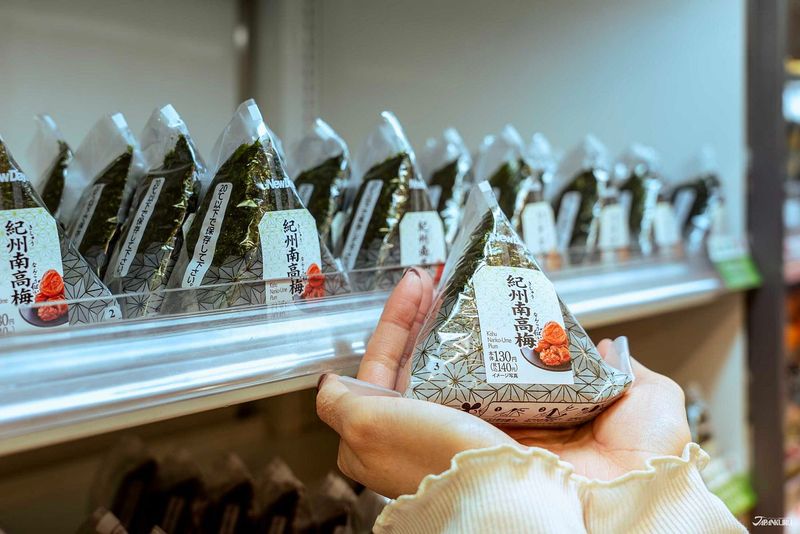
Japan’s convenience stores elevate simple rice balls into an art form, offering dozens of filling combinations wrapped in crisp seaweed. The engineering behind the packaging keeps nori separate until you’re ready to eat.
Classic fillings like salted salmon, pickled plum, and tuna mayo satisfy any craving, while seasonal specials showcase regional ingredients. The rice itself is perfectly seasoned and formed, never too tight or loose.
These portable meals fuel everything from hiking trips to late-night study sessions. The affordable price point and 24-hour availability make onigiri a traveler’s best friend. Each bite delivers comfort food perfection in a convenient, mess-free package.
6. Unagi (Nagoya’s Hitsumabushi)
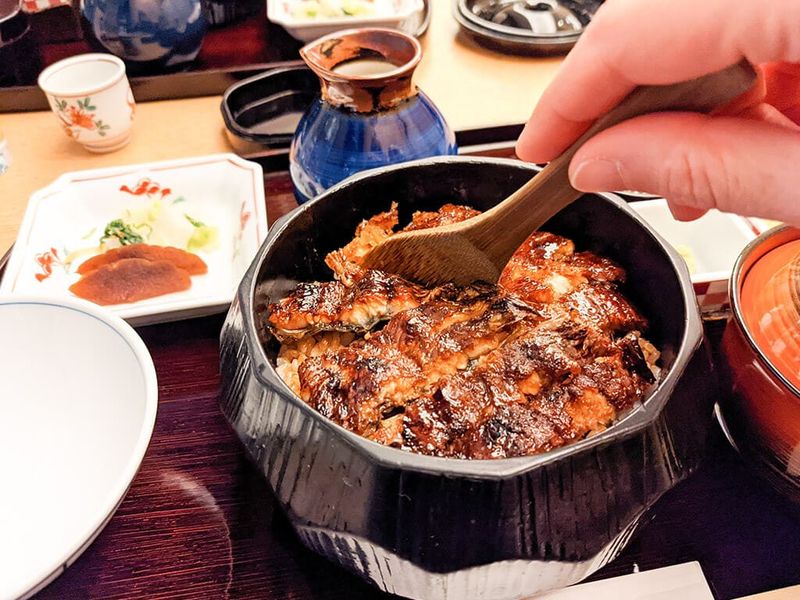
Freshwater eel gets transformed into something magical through careful grilling and glazing with sweet soy-based sauce. The skin becomes crispy while the meat stays incredibly tender and flaky.
Nagoya’s hitsumabushi style serves it three ways: first plain over rice, then with condiments like wasabi and scallions, finally as ochazuke with hot tea poured over.
The eel’s rich, almost buttery flavor develops through multiple rounds of grilling and sauce application. Summer tradition claims unagi provides energy during hot weather, though it’s delicious year-round. The preparation requires skill that takes years to master, making each meal special.
7. Tempura (Tokyo’s Michelin-Starred Spots)
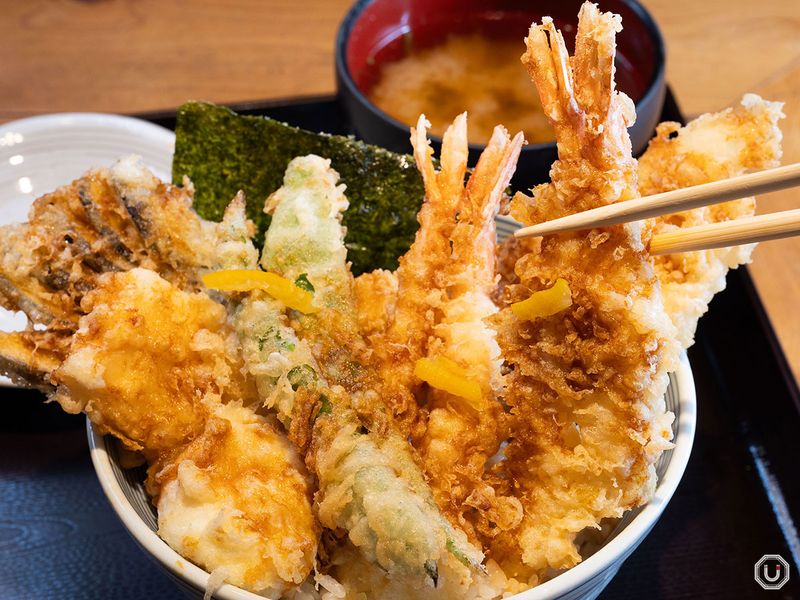
Master chefs turn simple vegetables and seafood into golden, impossibly light creations through precise batter and oil temperature control. Each piece emerges with a delicate, lacy coating that shatters at first bite.
The batter uses ice-cold water and minimal mixing to prevent gluten development, creating that signature airy texture. Premium spots serve each piece immediately, ensuring optimal crispiness and temperature.
Tentsuyu dipping sauce balances the fried elements with its light, savory profile. Watching a tempura master work feels like observing performance art—every movement calculated and graceful. The best places focus on seasonal ingredients, showcasing Japan’s dedication to perfect timing.
8. Kaiseki (Kyoto)
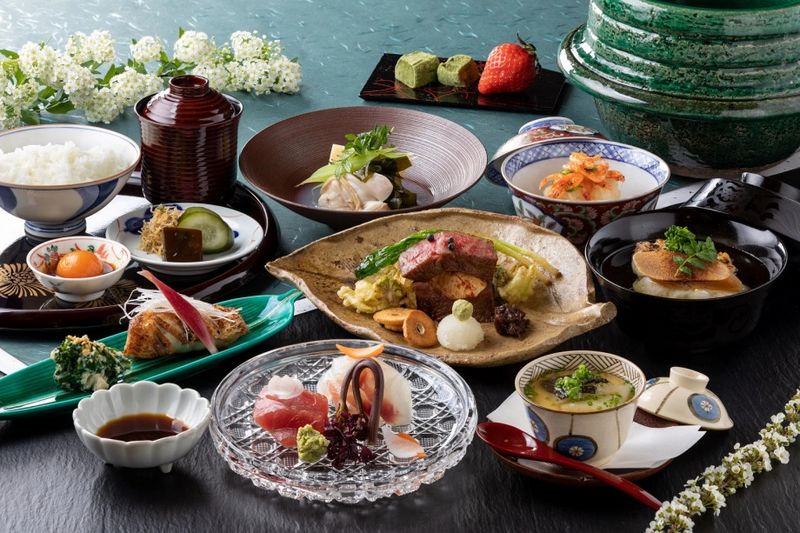
This multi-course dining experience represents Japanese cuisine at its most refined, showcasing seasonal ingredients through artistic presentation. Each small dish tells a story about the current season and local harvests.
Courses flow in a specific order designed to build flavors and textures gradually. The chef considers color, temperature, and even the dishes themselves as part of the overall composition.
Traditional kaiseki takes hours to complete, allowing diners to savor each moment and transition between tastes. The experience emphasizes mindfulness and appreciation for nature’s cycles. Kyoto’s kaiseki restaurants often feature garden views that complement the seasonal theme beautifully.
9. Curry Rice (CoCo Ichibanya)
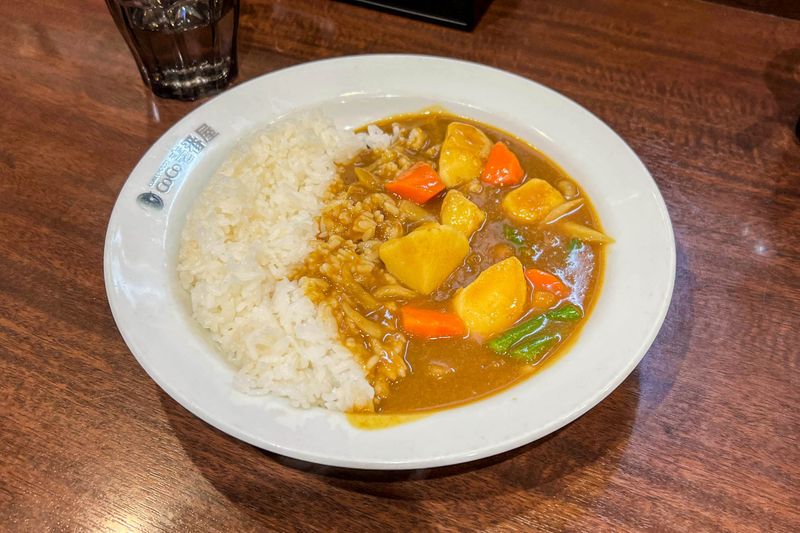
Japanese curry differs dramatically from Indian versions, featuring a thick, mildly sweet sauce that coats rice perfectly. The consistency resembles gravy more than traditional curry, making it ideal comfort food.
CoCo Ichibanya lets you customize spice levels and toppings, with katsu (fried pork cutlet) being the most popular addition. The curry base includes vegetables like carrots, potatoes, and onions that melt into the sauce.
This dish represents yoshoku—Western-influenced Japanese cooking that’s become thoroughly Japanese over time. Families often make curry at home using roux blocks, but restaurant versions offer superior depth and richness. The combination satisfies both curry and rice cravings simultaneously.
10. Mentaiko (Fukuoka)
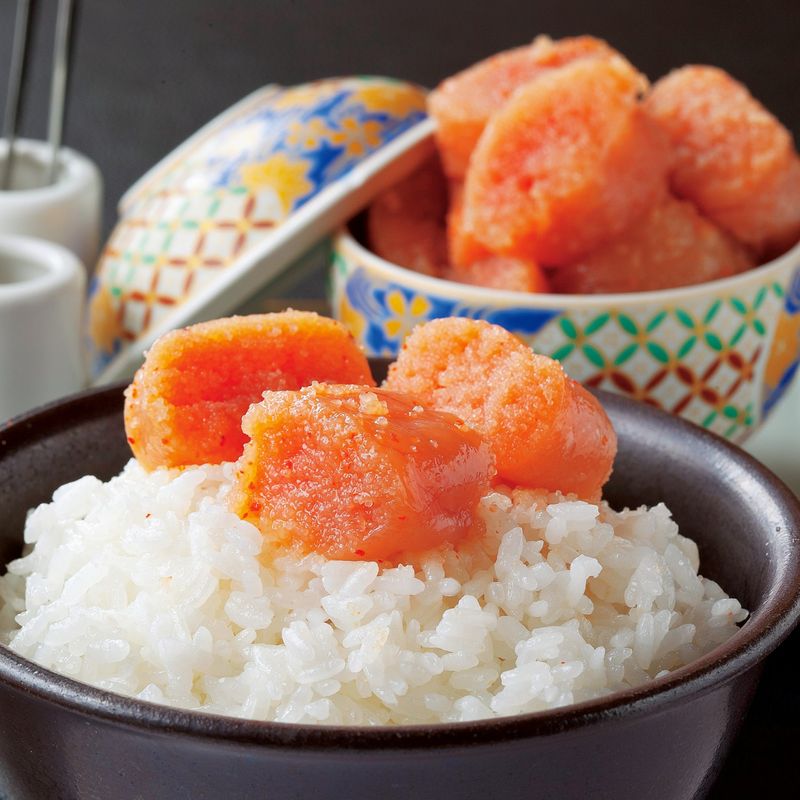
These spicy cod roe sacs pack an incredible umami punch that’s both briny and fiery. Fukuoka perfected the seasoning blend that transforms simple fish eggs into a regional obsession.
The bright orange-red color signals the chili pepper coating that gives mentaiko its signature heat. Popular preparations include mixing with hot pasta, stuffing into onigiri, or simply eating with rice.
The texture provides tiny pops of flavor with each bite, creating an almost addictive eating experience. Many visitors initially hesitate but quickly become converts after the first taste. Mentaiko represents Fukuoka’s connection to the sea and bold flavoring traditions perfectly.
11. Shabu-Shabu (Osaka/Kyoto)
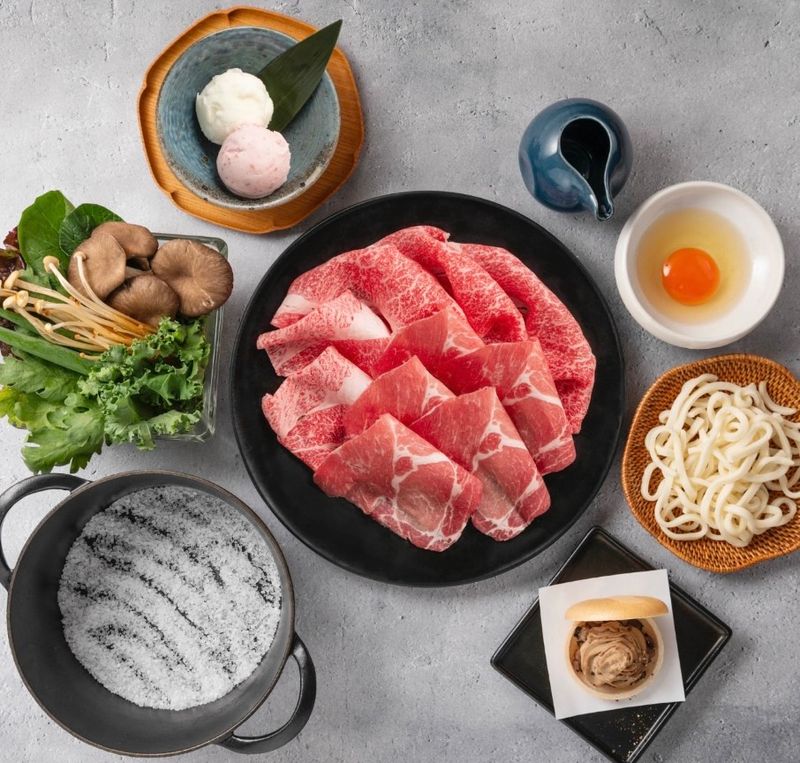
Paper-thin beef slices cook in seconds when swished through bubbling kombu broth, hence the onomatopoeia name mimicking the swishing sound. The meat’s quality shines through this simple preparation method.
Two dipping sauces accompany the meal: tangy ponzu and rich sesame sauce, each highlighting different aspects of the beef’s flavor. Vegetables like cabbage, mushrooms, and tofu cook in the same broth.
The interactive cooking process makes dining social and engaging, perfect for groups wanting to share an experience. High-end restaurants serve premium wagyu that practically melts before reaching your mouth. The clean, pure flavors showcase ingredients without heavy seasoning or complicated preparations.
12. Oden (Winter Convenience Stores)

Winter transforms Japanese convenience stores into cozy havens where bubbling oden pots offer warm comfort to anyone who needs it. The dashi broth simmers ingredients for hours, infusing everything with deep flavor.
Daikon radish becomes translucent and tender, fish cakes develop complex textures, and hard-boiled eggs absorb the savory broth completely. Each ingredient contributes to and benefits from the communal cooking process.
The casual atmosphere lets you point at what looks good, making it perfect for travelers with limited Japanese. Prices stay incredibly reasonable while providing satisfying warmth during cold months. Oden represents Japanese comfort food at its most accessible and welcoming.
13. Melon Pan (Bakeries Nationwide)
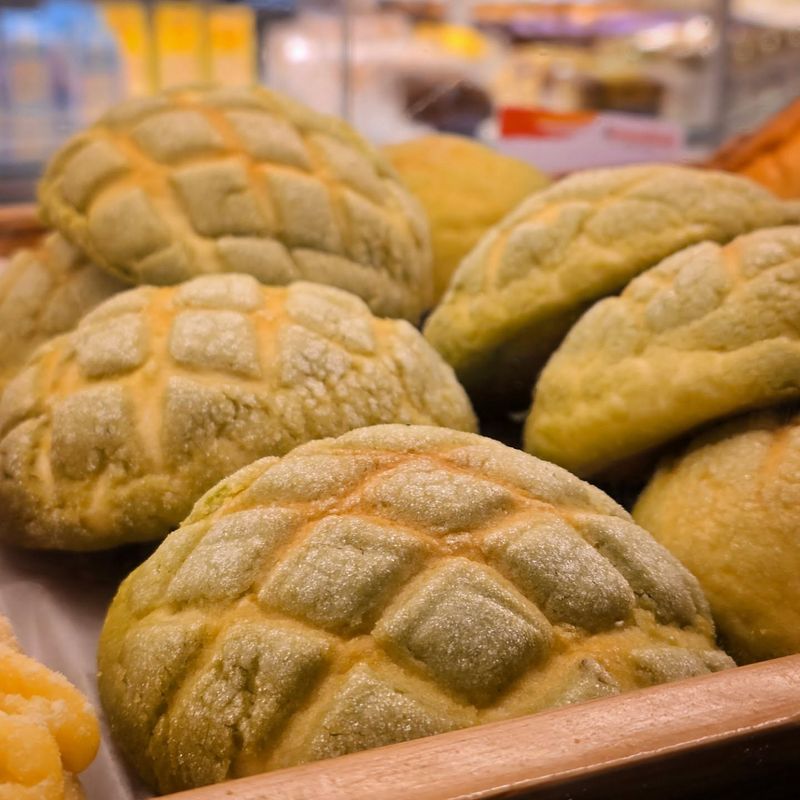
Despite its name suggesting melon flavor, this beloved bread gets its identity from the diamond-scored cookie crust that resembles cantaloupe skin. The contrast between crispy exterior and soft, sweet bread inside creates textural magic.
Bakeries across Japan offer countless variations, from chocolate chip to seasonal fruit flavors, though the original remains most popular. The cookie layer requires separate preparation, making melon pan more labor-intensive than regular bread.
Morning bakery visits reveal fresh batches still warm from the oven, when the cookie crust achieves peak crispiness. The affordable price makes it a favorite snack for students and workers alike. Each region adds subtle variations while maintaining the classic appearance.
14. Taiyaki (Street Stalls)
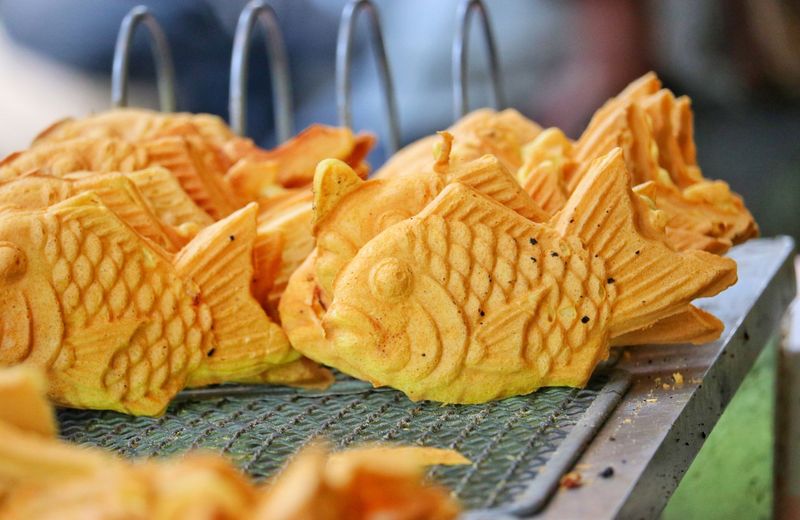
Fish-shaped molds create these whimsical pastries filled with sweet surprises, though traditional red bean paste remains the classic choice. The batter cooks differently in the tail versus the head, creating varied textures within each fish.
Modern versions experiment with fillings like custard, chocolate, or even savory options, but purists prefer the original azuki bean sweetness. Street vendors often let you watch the entire process from batter to finished fish.
The crispy exterior gives way to warm, sweet filling that requires careful eating to avoid burns. Seasonal variations appear during festivals and special events throughout Japan. Taiyaki represents the playful side of Japanese confectionery perfectly.
15. Natto (Breakfast Trays)
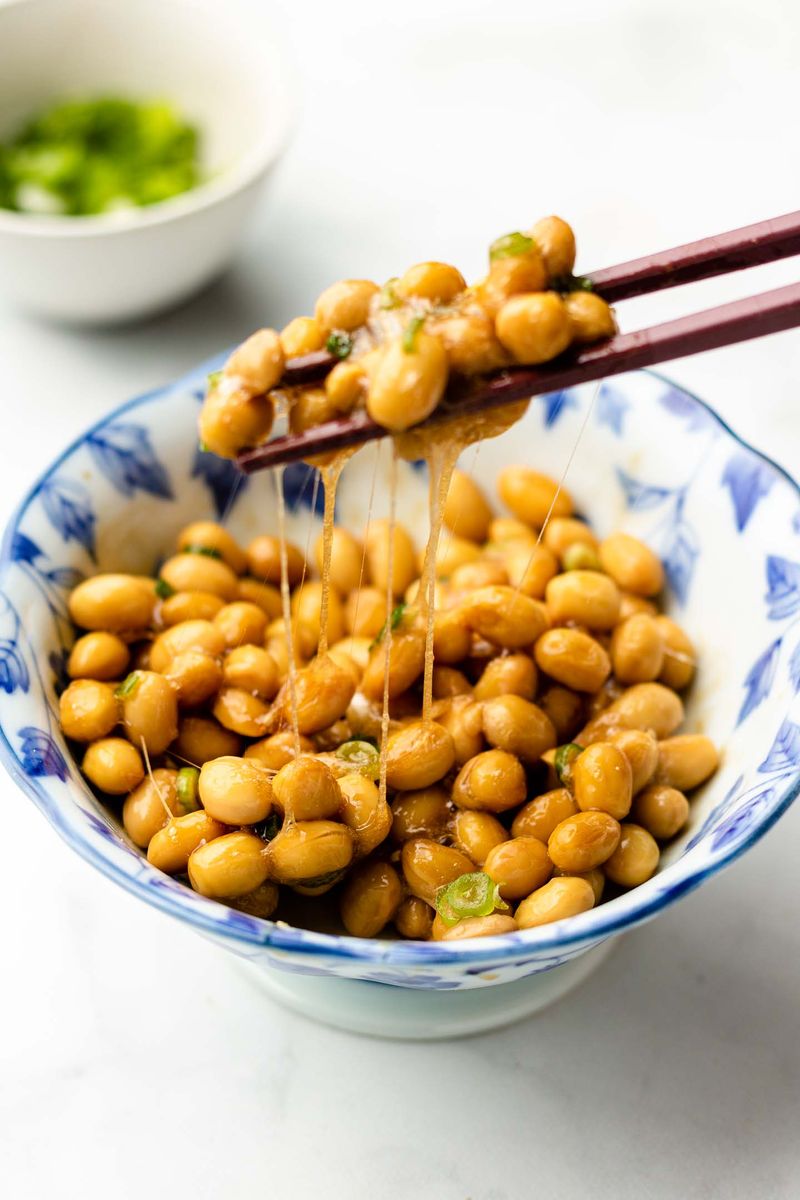
Fermented soybeans challenge newcomers with their strong aroma and stringy texture, but millions of Japanese people start their day with this protein-rich tradition. The fermentation process creates beneficial bacteria and distinctive flavors.
Proper preparation involves vigorous stirring to develop the characteristic sticky strands, then mixing with included mustard and soy sauce packets. Serving over hot rice helps mellow the intensity for beginners.
Health benefits include probiotics, vitamin K2, and plant protein, making natto a nutritional powerhouse despite its polarizing nature. Regional variations exist, with some areas preferring larger beans or different fermentation methods. Acquiring a taste for natto marks serious commitment to Japanese cuisine.
16. Matcha Desserts (Kyoto’s Uji)
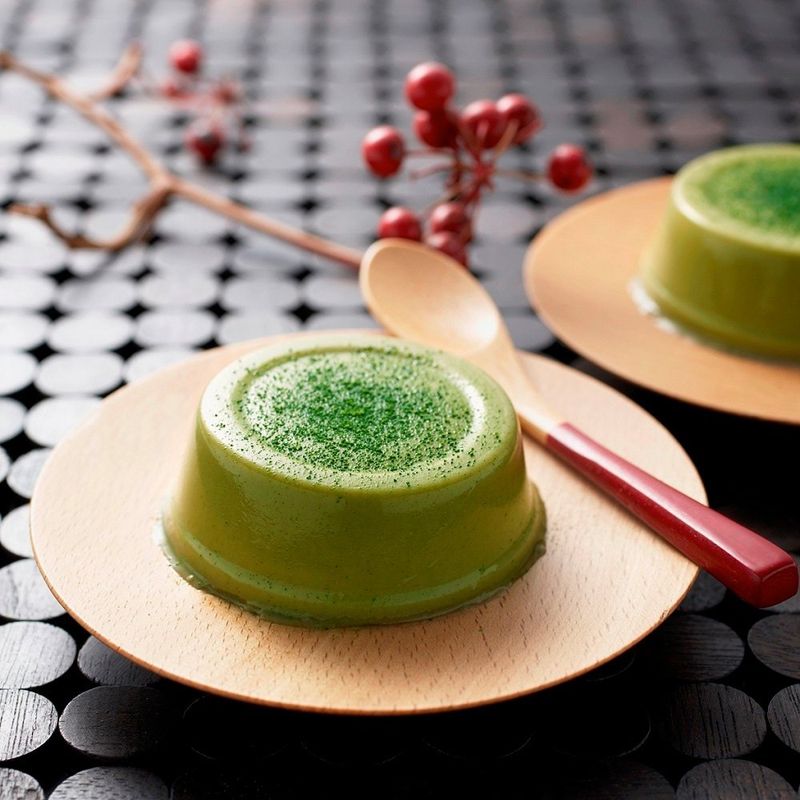
Uji’s premium matcha powder creates desserts that balance bitter green tea notes with sweet elements in sophisticated harmony. The region’s centuries-old tea cultivation produces powder with unmatched quality and color intensity.
Parfaits layer matcha ice cream, warabi mochi (jelly-like sweets), sweet red beans, and kinako (roasted soybean powder) into Instagram-worthy presentations. Each component complements the others while maintaining distinct flavors and textures.
Traditional tea houses serve these desserts alongside proper matcha tea ceremony presentations, creating complete cultural experiences. The bitter-sweet balance appeals to adult palates seeking refined sweetness rather than cloying treats. Uji’s matcha desserts represent Japanese confectionery artistry at its finest.
17. Gyukatsu (Tokyo’s Gyukatsu Motomura)
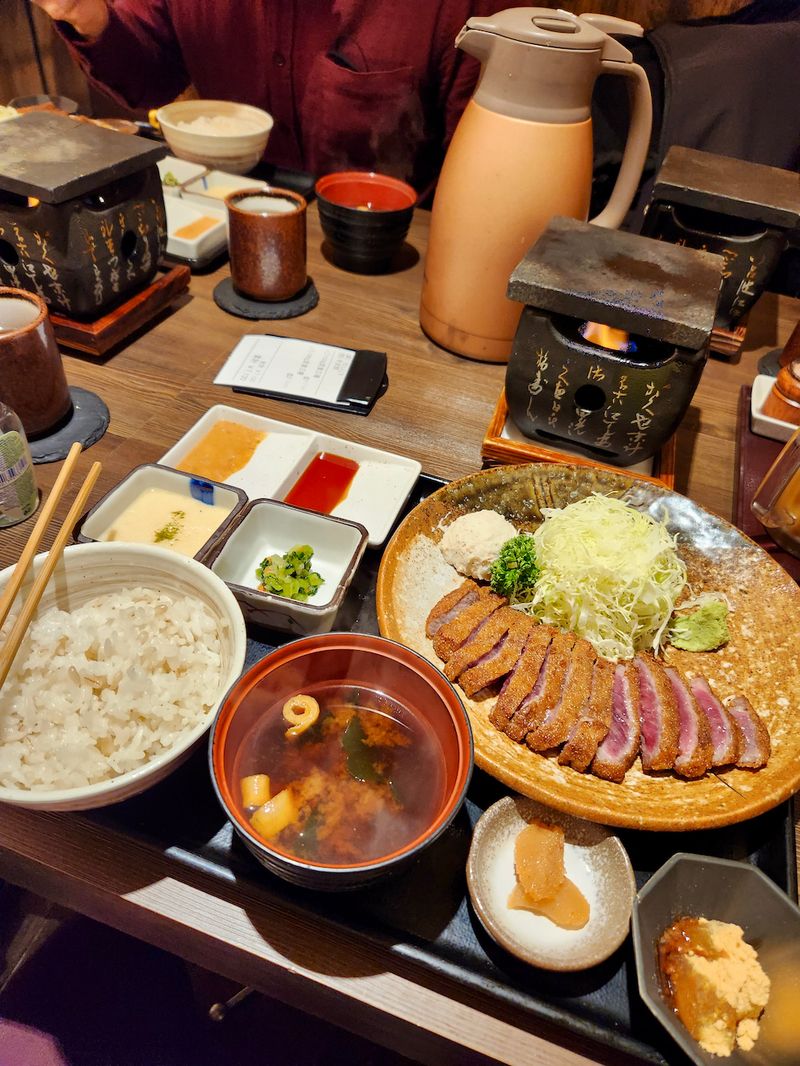
Thick beef cutlets get a light breading and quick fry, leaving the center beautifully rare and ready for personal grilling. Each table features a small hot stone where diners finish cooking to their preferred doneness.
The interactive element adds excitement to the meal while ensuring perfect temperature control for each bite. Premium beef quality shines through the minimal preparation, letting the meat’s natural flavors dominate.
Accompanying sauces and sides complement rather than mask the beef’s richness, maintaining focus on the protein’s quality. The concept revolutionized Tokyo’s katsu scene by applying the technique to premium beef instead of pork. Lines form early at popular spots, testament to gyukatsu’s rapid rise in popularity.
18. Hiroshima-Style Tsukemen
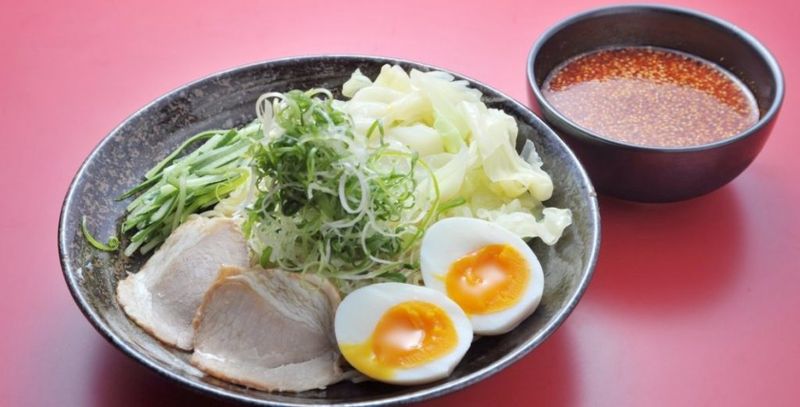
Thick, chewy noodles get served separately from intensely flavored pork-based broth, allowing diners to control each bite’s sauce-to-noodle ratio. The concentrated broth would be overwhelming as regular ramen soup.
Hiroshima’s version features particularly rich, almost gravy-like consistency that coats the substantial noodles perfectly. Toppings like chashu pork, green onions, and bamboo shoots add textural variety to each dip.
The eating technique requires some practice—dip, slurp quickly, repeat—but creates more intense flavor experiences than traditional ramen. Many shops offer broth dilution with hot water as you eat, maintaining optimal consistency throughout the meal. This style showcases how Japanese cuisine constantly evolves and improves.
19. Fugu (Shimonoseki/Yamaguchi)
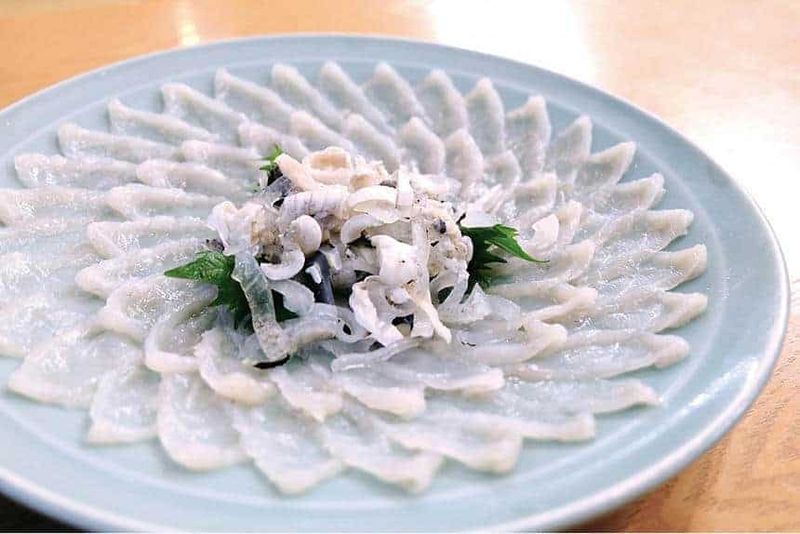
Licensed chefs transform potentially deadly pufferfish into delicate sashimi and warming hotpot dishes, requiring years of training to handle safely. The preparation removes all toxic parts while preserving the fish’s subtle flavors.
Fugu sashimi appears almost translucent when sliced paper-thin, arranged in beautiful patterns on special plates. The texture provides slight resistance before yielding, with flavors that are clean and ocean-fresh rather than dramatic.
Many first-timers expect intense experiences, but fugu’s appeal lies in its refined subtlety and the ceremony surrounding its consumption. Shimonoseki serves as Japan’s fugu capital, where the best chefs perfect this dangerous art. The psychological thrill enhances appreciation for the chef’s skill and the fish’s delicate nature.
20. Anmitsu (Traditional Cafés)
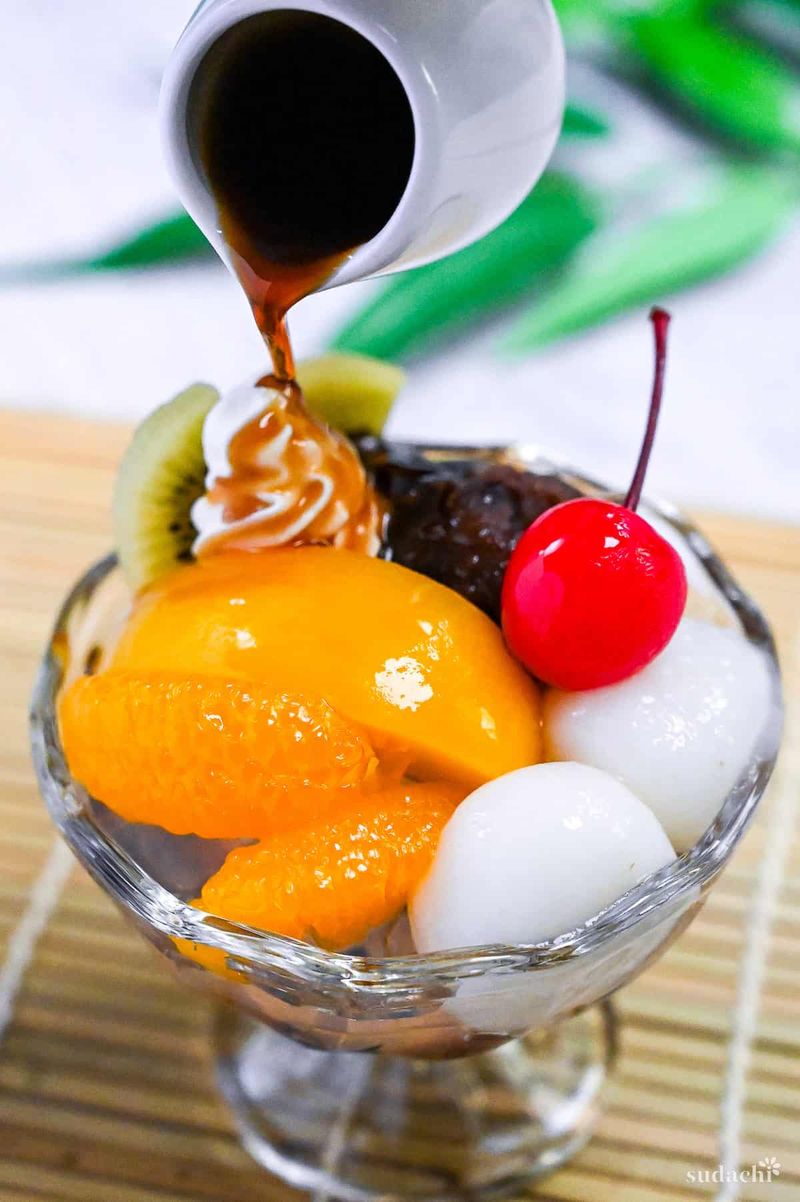
This refreshing dessert combines agar jelly cubes, sweet red beans, fresh fruit, and rich black sugar syrup into a cooling summer treat. The agar provides unique texture—firmer than gelatin but still delicate.
Traditional cafés serve anmitsu in glass bowls that showcase the colorful components before mixing. The black sugar syrup (kuromitsu) adds deep, molasses-like sweetness that balances the subtle agar and tart fruit elements.
Each spoonful delivers different combinations of textures and flavors, making every bite slightly different from the last. The dessert’s light nature makes it perfect after heavy meals or during hot weather. Anmitsu represents traditional Japanese sweets philosophy—simple ingredients creating complex satisfaction through careful balance and presentation.
21. Chawanmushi (Izakayas)
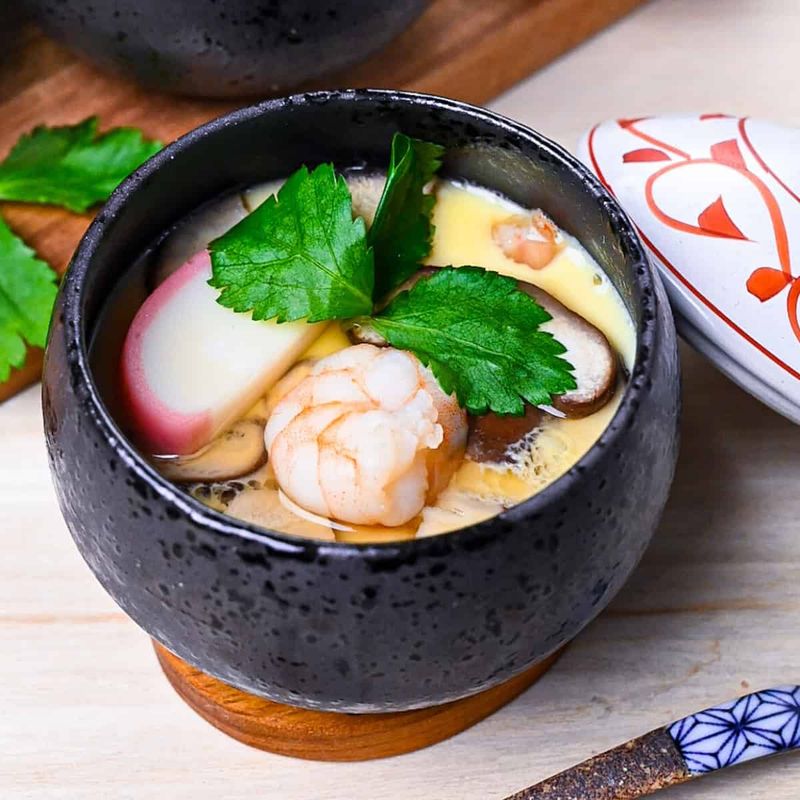
Silky steamed egg custard hides treasures like shrimp, mushrooms, and ginkgo nuts in its golden depths, creating surprise discoveries with each spoonful. The custard achieves perfect smoothness through careful temperature control during steaming.
Savory rather than sweet, chawanmushi serves as an elegant appetizer or side dish in izakayas and formal restaurants alike. The delicate texture requires precise egg-to-dashi ratios and gentle cooking techniques.
Each restaurant adds signature ingredients, from chicken and bamboo shoots to seasonal vegetables and seafood. The warm, comforting dish works year-round but feels especially satisfying during cooler months. Chawanmushi demonstrates Japanese cuisine’s ability to transform simple ingredients into refined, satisfying dishes through technique and attention to detail.
22. Yaki Imo (Winter Street Vendors)
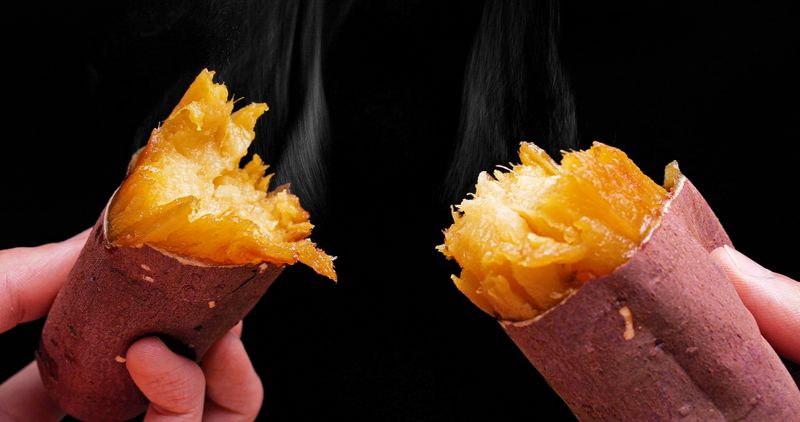
Slow-roasted Japanese sweet potatoes emerge from truck-mounted ovens with caramelized skins and impossibly creamy interiors. The roasting process concentrates natural sugars, creating candy-like sweetness without any additions.
Vendors announce their presence with distinctive recorded songs that echo through neighborhoods, drawing customers to the warmth and aroma. The potatoes cook for hours in special ovens designed for even heat distribution.
Winter’s cold air makes the hot, sweet potatoes especially appealing as both snack and hand-warmer. The natural sweetness rivals any dessert while providing wholesome nutrition and fiber. Yaki imo represents seasonal eating at its most fundamental—simple ingredients transformed by time, heat, and patience into something magical.
23. Hōtō (Yamanashi Prefecture)
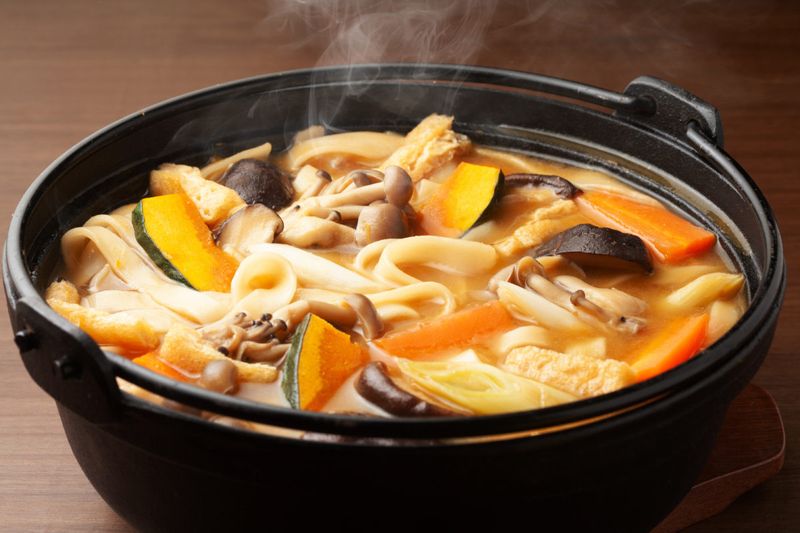
Thick, flat wheat noodles swim in hearty miso-based broth packed with kabocha squash, root vegetables, and whatever seasonal produce the mountains provide. This rustic dish sustained farmers through harsh winters for generations.
The noodles cook directly in the broth rather than separately, creating a stew-like consistency that’s both filling and warming. Kabocha squash partially dissolves during cooking, naturally thickening the soup while adding sweetness.
Regional variations reflect local ingredients and family traditions, but all versions prioritize warmth and sustenance over refinement. The dish represents Japanese country cooking—practical, seasonal, and deeply satisfying. Yamanashi’s mountain climate makes hōtō especially comforting after outdoor activities like hiking or skiing around Mount Fuji.

